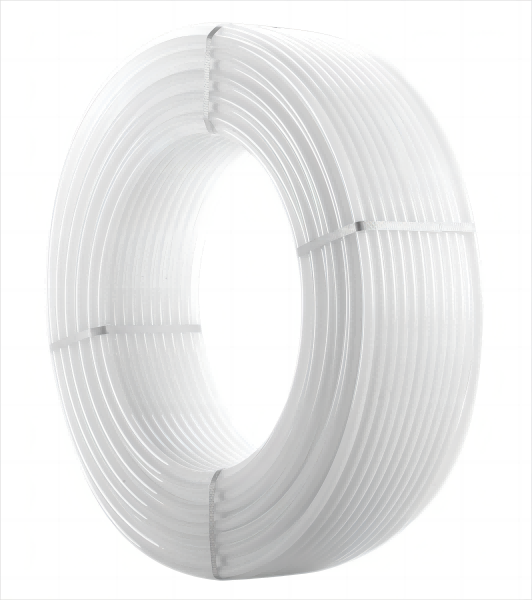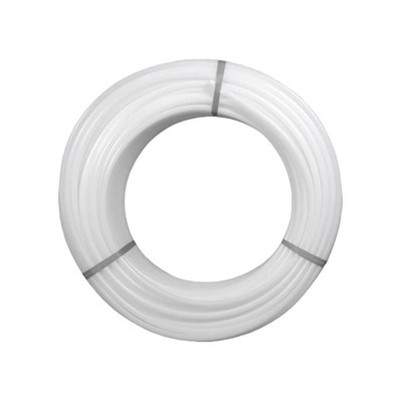What are the fire - resistance properties of pex - a pipes?
Leave a message
Hey there! As a supplier of PEX - A pipes, I often get asked about the fire - resistance properties of these pipes. So, I thought I'd write this blog to share some insights on this topic.
First off, let's understand what PEX - A pipes are. PEX - A stands for cross - linked polyethylene of type A. It's a popular choice for plumbing systems due to its flexibility, durability, and resistance to freezing and bursting. But when it comes to fire, how do these pipes hold up?
PEX - A pipes are made of polyethylene, which is a hydrocarbon polymer. Like most polymers, polyethylene is flammable. However, the fire - resistance properties of PEX - A pipes aren't as straightforward as just being flammable.
One of the key factors in a pipe's fire performance is its ignition resistance. PEX - A pipes have a relatively high ignition temperature. This means that they need a significant amount of heat to catch fire. In normal household or commercial settings, it's not easy for PEX - A pipes to reach this ignition temperature. For example, in a typical kitchen or bathroom environment, the ambient temperature is nowhere near high enough to ignite these pipes.
Once ignited, the behavior of PEX - A pipes is also important. When PEX - A pipes burn, they tend to melt and drip. This can be both a good and a bad thing. On one hand, the melting and dripping can remove the burning material from the source of the fire, potentially helping to reduce the spread of flames. On the other hand, the dripping molten material can fall onto other flammable materials and start new fires.
Another aspect to consider is the rate of flame spread. The flame spread rate of PEX - A pipes is relatively slow compared to some other plastics. This gives occupants more time to evacuate a building in case of a fire. Fire safety standards often measure the flame spread index (FSI). PEX - A pipes usually have a lower FSI, which is a positive sign for fire safety.
Now, let's talk about some safety measures and standards related to PEX - A pipes. Many PEX - A pipes on the market, including the ones we supply, meet certain fire - safety standards. For instance, you can check out our PE-Xa Pipe ISO15875 which complies with the ISO 15875 standard. This standard sets out requirements for the quality and performance of PEX - A pipes, including their fire - resistance properties.
In addition, our PE-Xa Pipe NSF meets the NSF standards. These standards ensure that the pipes are safe for use in potable water systems and also take into account fire - safety aspects.
When it comes to installation, proper installation can greatly enhance the fire - resistance of PEX - A pipes. For example, using fire - rated insulation around the pipes can slow down the heat transfer to the pipes and reduce the risk of ignition. Also, using appropriate fittings like our Ppsu Elbow 90° can ensure a secure and fire - safe connection.
It's also important to note that in some high - risk areas, additional fire - protection measures may be required. For example, in industrial settings or buildings with strict fire - safety codes, PEX - A pipes may need to be installed in fire - rated enclosures.
Let's take a look at some real - world scenarios. In a residential building, PEX - A pipes are often used for water supply lines in the walls and floors. In case of a small electrical fire in a room, the PEX - A pipes are unlikely to be directly affected if they are properly installed and insulated. However, in a large - scale fire, where the temperature rises significantly, the pipes may eventually be at risk of ignition.
In commercial buildings, especially those with a high occupancy rate, fire - safety is of utmost importance. The slow flame spread rate of PEX - A pipes can be a valuable asset in these situations. It gives more time for the fire - suppression systems to activate and for people to evacuate safely.
Now, I want to touch on the comparison with other types of pipes. Compared to metal pipes like copper or steel, PEX - A pipes are more flammable. However, metal pipes have their own drawbacks, such as being more expensive, heavier, and more difficult to install. PEX - A pipes offer a good balance between cost, ease of installation, and fire - safety when proper precautions are taken.
In conclusion, while PEX - A pipes are flammable, they have certain fire - resistance properties that make them a viable option for many plumbing applications. Their high ignition temperature, slow flame spread rate, and the ability to melt and drip can all contribute to a certain level of fire safety. However, it's crucial to follow proper installation procedures and use appropriate fire - protection measures.


If you're in the market for PEX - A pipes and want to learn more about their fire - resistance properties or other features, feel free to reach out to us. We're here to answer all your questions and help you make the right choice for your project. Whether it's a small residential plumbing job or a large - scale commercial installation, we've got the PEX - A pipes you need. So, don't hesitate to contact us for a quote and start the procurement process.
References
- "Plastic Pipes Handbook"
- ISO 15875 standards documentation
- NSF standards publications





